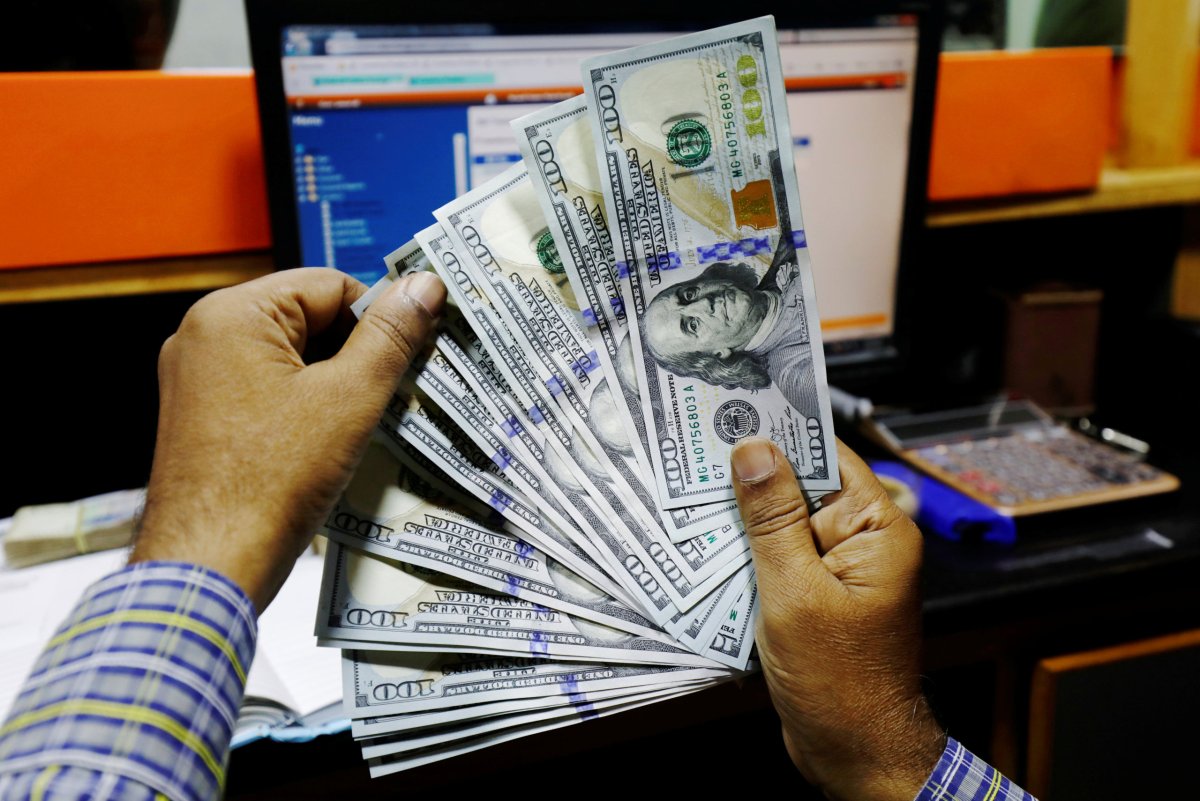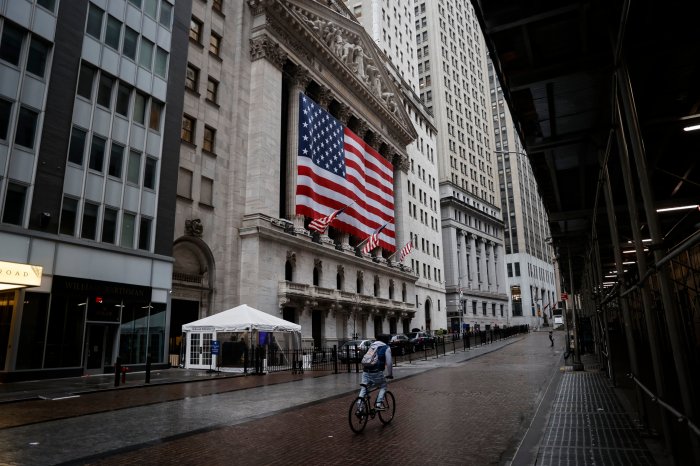NEW YORK (Reuters) – The dollar firmed against major currencies for a third straight day on Friday, as investors took shelter in the U.S. currency amid worsening economic fallout from the coronavirus outbreak.
“As we see poor data coming in from Europe, UK, Italy, if you’re trying to be rushing anywhere, it would be U.S. Treasuries and the U.S. dollar as a safe haven,” said John Doyle, vice president of dealing and trading at Tempus Inc in Washington.
The dollar largely shrugged off the U.S. non-farm payrolls report that showed massive job losses of 701,000 last month, compared with expectations of 100,000 lost jobs.
March’s contraction abruptly ended a historic 113 straight months of employment growth. The Labor Department also revised February’s number upward to 275,000 job gains. The unemployment rate rose to 4.4% from 3.5% the previous month. [nL1N2BQ2V5]
“The plunge in non-farm payrolls in March, which is already close to the worst monthly declines during the global financial crisis, suggests the coronavirus pandemic started to decimate the economy even sooner than we thought,” said Andrew Hunter, senior U.S. economist at Capital Economics.
The non-farm payrolls report followed Thursday’s data showing initial claims for U.S. unemployment benefits rose to 6.65 million in the latest week from an unrevised 3.3 million the previous week.
In afternoon trading, the U.S. dollar index was up 0.4% at 100.61 <=USD>. The index posted a 2.3% gain on the week, having whipsawed last month from highs on a scramble for cash before slumping as the U.S. Federal Reserve flooded the market with liquidity.
The euro was down 0.4% against the dollar at $1.0810 <EUR=EBS>, on pace for a 2.9% weekly loss.
Indecision among euro zone governments about a rescue package for the region’s hobbled economies has weakened the euro in recent days.
The Japanese yen, Swiss franc, sterling, as well asthe Australian and New Zealand dollars all lost ground as the dollar strengthened across the board. <JPY=EBS> <CHF=EBS> <GBP=D3> <AUD=D3> <NZD=D3>.
The dollar was last up 0.5% at 108.42 yen.
As lockdowns continue, the economic impact of the epidemic is becoming more marked, with purchasing managers’ indexes across the euro zone and Britain on Friday showing a slump in business activity. [nL8N2BR2A4]
“The complication is that while all the things that the governments have done are very positive, they’re like extra welfare payments and they can’t do anything more than that,” said Adrian Lee, president and chief investment officer at active currency manager Adrian Lee & Partners.
“When we do come out of lockdowns, everybody will be desynchronized. China comes out first, then Italy comes out. But the world is so interconnected. It’s not great when you can work in the U.S., but you can’t visit London.”
Graphic: World FX rates in 2020 https://graphics.reuters.com/GLOBAL-CURRENCIES-PERFORMANCE/0100301V041/index.html
(Reporting by Gertrude Chavez-Dreyfuss; Additional reporting by Iain Withers in London; Editing by Nick Zieminski, Dan Grebler and Jonathan Oatis)






















